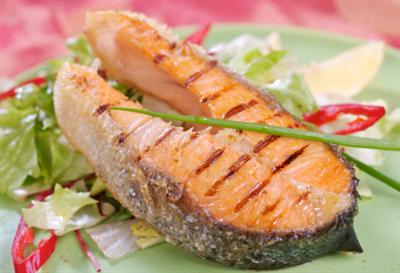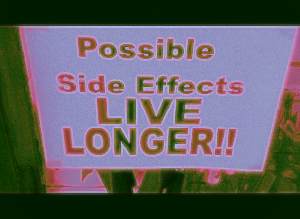Vitamin D Foods
And the wonderful Mushroom
Unfortunately Vitamin D foods are rare, and there are only a few good Vitamin D sources to come by at all. Really the only significant Vitamin D sources worth discussing are the sun, Vitamin D3 supplements and fish. There are no fruits or vegetables that contain an amount of Vitamin D that would be considered significant. However there are a few other foods with Vitamin D -one of which that you may be surprised at.
Vitamin D foods
Vitamin D food sources definitely exist, although if you have read the
 Vitamin D requirements
page, you will quickly realize that it would be very difficult to get
all of your Vitamin D requirements through foods. These few sources are
really the only significant sources of foods with Vitamin D. There are a
few others, but they have so little Vitamin D that that they are not
worth discussing.
Vitamin D requirements
page, you will quickly realize that it would be very difficult to get
all of your Vitamin D requirements through foods. These few sources are
really the only significant sources of foods with Vitamin D. There are a
few others, but they have so little Vitamin D that that they are not
worth discussing.
Cod Liver Oil
Cod Liver Oil
has a long history of being a highly nutritious food. From the 1800's
and into the mid 1900's, mother's would regularly have their kids line
up to get a spoonful of cod liver oil every day.
Although it was
only a "folk remedy" and the mothers couldn't say exactly why it was
good for their kids, we know today that it was a pretty good idea.
On the
Vitamin D facts
page, we discussed the potent effects that Vitamin D has on
the immune system
and how it prevents colds and flu.
Cod liver oil also is a rich source of Omega Three Fatty Acids. Nutrients that most people in the west are severely deficient in.
However, with only about 400 - 500 IU's per teaspoon (depending upon the manufacturer), that's not a significant amount of Vitamin D.
Unfortunately, cod liver oil also contains Vitamin A.
And to get a significant dose of Vitamin D, you would have to consume so much Vitamin A that you would quickly become toxic.
Therefore, Cod Liver Oil should NOT really be treated as a Vitamin D food- or any OTHER type of food or supplement for that matter.
Eggs
Egg yolk is another Vitamin D food.
Each yolk contains about 20 IU's of Vitamin D.
That's not nearly enough to count on as a significant food source of Vitamin D
Fish
Fish are a good natural source of Vitamin D.
But only FATTY fish; salmon, sardines, makerel, and herring are good sources of vitamin D.
And
a serving will always vary significantly due to the fat content of the
fish, but you can estimate that a serving of one of these fish can get
you between 200 - 1200 IU's per serving.
Fatty fish also contain the Omega 3 fatty acids that we so desperately need in the west, so these are great dietary choices.
But unless you eat a lot of fish, you're probably not going to meet your Vitamin D
requirements. You also risk higher mercury exposure when you eat large
predatorial fish, so you need to balance out that risk as well.
Milk
We
think of milk products as good Vitamin D food sources, but that is only
because they have been fortified. Most milk products tend to have about
100 IU's per serving, so they may not even be the best Vitamin D sources either.
The issue of milk is a WHOLE discussion in itself. Milk is a VERY frequent allergen that many people don't even know they are allergic to.
This low level allergy could even be contributing to many chronic diseases.

There
is debate about whether pasteurization and chemicals like rBST and
antibiotics that are given to cows have made standard milk products
unfit for human consumption anyway.
So, think critically about
what you are putting in your body when you use milk to provide nutrients
like Vitamin D and Calcium. They may not be the great sources that we
have been led to believe.
The Surprising Vitamin D food
If you have read this far, you know that not many foods are great Vitamin D sources.
But there is ONE that actually IS a good Vitamin D food source, and wasn't mentioned in yesterday's blog from the Natural News article.
Mushrooms!

Mushrooms, like us, photosynthesize Vitamin D from the sun.
Unfortunately,
farmed mushrooms are grown in the dark. Wild mushrooms, however get
some sun exposure and have a certain amount of Vitamin D. A study done
on volunteers who ate wild mushrooms every day at lunch for 3 weeks
showed that this Vitamin D gets absorbed and so is actually one of the
few very good Vitamin D foods, and the only natural source of Vegan Vitamin D.
How much Vitamin D do mushrooms have?
Wild mushrooms have about 400 - 500 IU per serving.
Pretty soon, however, you may see Supermushrooms
in the supermarket. These will be mushrooms that have been exposed to
UV light either during or after harvest. These mushrooms may have up to
2500 IU's per serving! Wow! If you can find sun dried mushrooms, this
would be another great source of Vitamin D. If you can't get wild or sun
dried mushrooms and don't want to wait for Supermushrooms,
theoretically you should be able to make your own Supermushrooms by
sitting store bought mushrooms out in the sun or under a UV light for 5
to 10 minutes!
The
downside to getting your Vitamin D from mushrooms is that they only
contain Vitamin D2- and Vitamin D2 is a much inferior form to the Vitamin D3
that is made in our own bodies from the sun. Therefore, mushrooms are
not the recommended way to get your vitamin d. If you are a vegan or
vegetarian, then take a look at the Vegan Vitamin D page and find out what your best options are.
What are the Vitamin D Side Effects?
You Might be Surprised...
What are Vitamin D side effects?" you ask. Well, there are VERY few side effects of vitamin d- and most of those are very easily remedied when you know a few tricks. There is a lot of confusion about the side effects of vitamin d because so many people get SIDE EFFECTS confused with Vitamin D Overdose Symptoms . Overdose symptoms are NOT the same as side effects of vitamin d, so please be sure to read the previous page so that you understand the difference between the two.
There have been thousands of studies done on Vitamin D and the vast majority of studies state that they were astonished at the remarkable LACK of vitamin D side effects. Of course, there are ALWAYS some side effects, but even placebos (sugar pills) have side effects in studies and you must COMPARE
the amount and severity of side effects to those experienced by
placebo. For the most part, there just simply are no more side effects
of Vitamin D than those experienced by users of placebos. But here are a
few that you might experience and some help for them.
What's Magnesium Got to Do With it
In order to MAKE vitamin D in the blood, your body must USE UP
magnesium. And a large proportion of people are already mildly to
moderately magnesium deficient (really!). And therefore, some people who
take Vitamin D and believe that they are having vitamin D side effects
are ACTUALLY having Signs of Magnesium Deficiency!!
These side effects of Vitamin D that are actually magnesium deficiency symptoms are:
- Vitamin D and Constipation
- Jitteryness, hyperactivity, insomnia or Anxiety from Vitamin D
- Heart Palpitations
- Muscle Cramps
These vitamin d side effects can be easily overcome by taking Magnesium and Vitamin D together- with the magnesium in a dosage as outlined on the Magnesium Dosage
page. But magnesium is not the ONLY nutrient required to prevent
problems from taking vitamin d. It's imperative to also be sufficient in
Vitamins A and K when taking vitamin d, especially the Vitamin D 50,000 IU
pills that are being recommended by many doctors. It is HIGHLY
recommended that with any Vitamin D regimen, you also take a HIGH
QUALITY multivitamin and mineral pack such as Beyond Chelation Improved Multivitamin and Mineral Daily Packs
that contains Vitamins A, K and magnesium in adequate doses that will
allow you to avoid the side effects of vitamin d that are due to lack of
necessary cofactors.
Quality of Pills and Ingredients
 |
- Packed in Coconut Oil- which doesn't go rancid
- Is packed 'dry' without oil
and this might solve your vitamin d side effects.
You can get a High Quality Dry (no oil) Vitamin D Supplement here.
OR
If you have trouble swallowing pills or you are supplementing small children, there is Vitamin D in a Spray
available to make things easier for you.
Muscle and Bone Pain
This is a side effect of vitamin d that is not so easy to remedy and is actually a sign that you really NEED TO CONTINUE taking the vitamin d. If you experience Pain from Vitamin D
this very likely means that your bones have become somewhat
demineralized from having vitamin d deficiency for a very long time.
When your bones are demineralized and you begin Vitamin D Therapy,
this can cause calcium to begin to go back into the bones. When the
calcium goes into the bones it drags fluids with it. This fluid can
actually cause a small expansion of the 'collagen matrix' inside the
bones and this expansion pushes out against the exterior covering of the
bone which is very inflexible and has extensive nerve endings.
When
this occurs, you can experience this as bone pain or even muscular
pain. If you experience new or worsening pain from taking vitamin d, it
is NOT Vitamin D Contraindication, a reason to be scared or to stop taking the vitamin d. If you continue with the Vitamin D Therapy,
the pain should subside in several weeks. While uncomfortable, you will
be better off in the long run if you manage the pain for this time and
'get through' to the other side.
Vitamin D Resources
- 5000 IU Vitamin D 3 Supplements- Vitamin D3 is really the ONLY vitamin d that you should be taking. Get Vitamin D 3 in a clinically relevant dose for adults.
- Sunshine Mist Vitamin D Spray- This Vitamin D3 is GREAT for kids. Just a spray a day is all it takes.
- The Vitamin D Solution: A 3-Step Strategy to Cure Our Most Common Health Problem- Take a look at this EYE OPENING book. This fascinating account of the health benefits of Vitamin D will keep you turning pages far into the night!
I personally take a spray form of 1000 IU Vitamin D3 per serving of 6 sprays from Dr.
Mercola...that way I get to control the dose according to how much sun
exposure I get in a day:) I find a spray form is a great way to take it for fast absorption and an amazing way to get a controlled dose.
